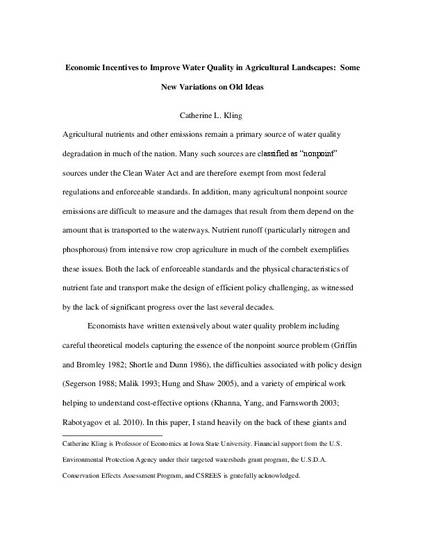
Agricultural nutrients and other emissions remain a primary source of water quality degradation in much of the nation. Many such sources are classified as “nonpoint” sources under the Clean Water Act and are therefore exempt from most federal regulations and enforceable standards. In addition, many agricultural nonpoint source emissions are difficult to measure and the damages that result from them depend on the amount that is transported to the waterways. Nutrient runoff (particularly nitrogen and phosphorous) from intensive row crop agriculture in much of the cornbelt exemplifies these issues. Both the lack of enforceable standards and the physical characteristics of nutrient fate and transport make the design of efficient policy challenging, as witnessed by the lack of significant progress over the last several decades.
Available at: http://works.bepress.com/catherine_kling/112/

This is a manuscript of an article from American Journal of Agricultural Economics, 2011, 93(2); 297-309. Posted with permission.